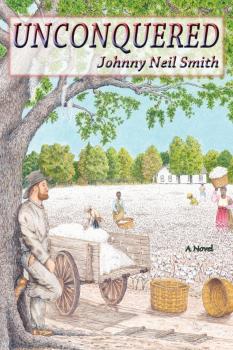ТОП просматриваемых книг сайта:
Историческая литература
Различные книги в жанре Историческая литература, доступные для чтения и скачиванияАннотация
Аннотация
Действие романа разворачивается в период с 1905 по 1914 гг., в Богоявленском, имении князя Сенявина, на фоне только что отгремевшей русско-японской войны, "кровавого воскресенья" и революционного движения в России. В этом романе есть место для всего, что привлечет читателя: и великие исторические реалии, и любовные интриги, и настоящая дружба, и описания давно исчезнувших укладов жизни, и возможность провести сравнение эпохи ушедшей с днем сегодняшним, с вызовами, которое сто лет спустя нам снова предлагает время.
Информация о книге
Автор произведения Екатерина Владимировна Дроздова
Аннотация
In the winter of 1637, Luis de Rosas, a tough, two-fisted soldier, stood outside the convent door beating on its staves with a gloved hand. Appointed to the governorship of New Mexico, he had petitioned the viceregal authorities for permission to set out from the city of Mexico for Santa Fe in advance of the regular supply caravan. While he was initially obliged to curb his restlessness, he could wait no longer. He wanted the supply wagons loaded and for Fray Tomas Manso and the men of his escort to hit the trail. Who could know that, in his impatience to begin his long journey and thus assume his responsibilities as captain-general of the New Mexico Kingdom, he was merely hurrying toward a lengthy confrontation with New Mexico's recalcitrant soldier-colonists and priests, and ultimately to his own demise? This book forms the centerpiece of Lucero's trilogy about New Mexico's colonial history. It tells the story of his Baca, Gomez, Marquez, and Perez de Bustillo forebears in their bitter conflict with Rosas, the most interesting governor to serve prior to the Pueblo Indian Revolt of 1680. Because of Rosas's cruel tyranny, Lucero's ancestors become tragically entangled in the insanity of colonial affairs. Based on a true story, the book sets out the particulars of Church and State relations in New Mexico during the period 1637 – 1641 that led to the assassination of its governor and the beheading of the eight citizen-soldiers who were responsible for his death.
Аннотация
George Henry Thomas was once considered the most successful general in the Civil War. Now, however, he has been nearly forgotten by historians. Born and raised in Virginia, Thomas graduated from West Point and without hesitation fought for the North, only to be disowned by his Southern family and distrusted by the Northern generals above him. Yet in death, five years after the war, he was honored with a national cortege from California to New York; 10,000 mourners attended his funeral, including President Grant and his Cabinet. The dedication of General Thomas' statue in Washington, D.C., erected by his men in 1879, was the largest celebration in the Capitol's history. This cinematic novel brings Thomas to life in his relationships with his devoted soldiers, his friends, and his loyal, independent wife. The story's narrator, a young colonel who became his confidante, absorbs the General's wisdom, grief, and commitment to carrying out the devastating battles which, he believed, would both end the war he hated and hold his country together. The novel pictures George Henry Thomas as the kind of leader America needs now, one who fights for and respects all human beings, and is determined to see America whole.
Аннотация
In July of 1925, Sarah Kaufman is finally taking the holiday she deserves. Her court duties in the hands of a competent replacement, she looks forward to a month of relaxation with her cousin Lena, the newest and most progressive member of the English department at Tennessee’s Edenville College. Knowing that the South would be even more humid than Toledo, Sarah packed only her lightest clothing. What she did not know, however, was that she also would need the investigative skills she had just barely acquired, the lover she had continuously resisted, and the emotional strength that she thought had been tested enough for one lifetime. Indeed, even before one of hottest summers on record has a chance to make her rethink her vacation plans, Sarah reluctantly agrees to help investigate the mysterious death of one of Lena’s most esteemed and, as she discovers, enigmatic colleagues. With the dead professor’s own cryptic, Darwinian message as a guide, Sarah travels the short distance to Dayton, Tennessee, where the internationally followed Scopes “Monkey” trial is underway. There, along with the disquieting Mitchell Dobrinkski reporting on the event for the Blade, she meets the famous journalist H. L. Mencken, who provides her with information that could help unravel the mystery. But the case, and the challenges to Sarah’s physical and psychological well-being, have only just begun. What follows is a harrowing and complex path of dead-ends, bigotry and brutality, a journey that shatters her own preconceptions, takes her to the depths of her own desire, and ultimately leads her back to the college where Darwin’s controversial theory of evolution startlingly resurfaces in a manner she never could have predicted. Set against the backdrop of what was deemed the “Trial of the Century,” this socially and politically relevant blend of fact and fiction includes actual courtroom excerpts and vividly portrays the Scopes trial’s central figures: John Scopes, William Jennings Bryan, Clarence Darrow, and especially H. L. Mencken.
Аннотация
In this superbly researched WWII novel, award-winning writer, Tori Warner Shepard, captures the mood of remote Santa Fe, New Mexico as it waits out WWII for the return of her men held in Japanese prison camps. POW Melo Garcia has survived the Bataan Death March in the Philippines but his brother and father have not. Along with 1,500 other American prisoners, he is diseased, tortured, starved, and used as slave labor in a condemned coal mine outside of Nagasaki, Japan. Melo is the last living hope to continue his family's centuries old line for his war-widowed mother, Nicasia, who prays for his return alongside his sweetheart, LaBelle. They have received no reliable news since the surrender to the enemy in 1942. The novel is as much a story of the men's heroism as it is of their Hispanic community which after Pearl Harbor was a distant and a safe refuge from the war, sought out by the US Government as an internment camp for 2,000 Japanese “Isseii” barely a mile from the office of the top-secret Manhattan Project that was developing the atomic bomb to be dropped 20 miles from Melo's prison camp. Add to the mix FBI and counter-intelligence agents, Gringo fanatics opposed to Roosevelt, Melo's “novia” LaBelle and Phyllis, the redheaded bombshell, who challenges her. And Melo himself with his mother who embodies “gracia,” a word that does not translate. This gripping exposition of the Japanese atrocities is even-handed and the characters and personalities on the home front will haunt your memory. TORI WARNER SHEPARD grew up in post-war Japan and since moving to Santa Fe over thirty-five years ago has been absorbed by the story of the POWs, their welcome home, and the effects of the war on a tight isolated community. She has an M.A. in Creative Writing which she has taught, and has published poetry, articles and short stories. Winner of the Mountainland Award for Contemporary Fiction, she has three grown children and lives with her husband in an old adobe.
Аннотация
The year is 1923, and one of Ohio’s most prominent judges, O’Brien O’Donnell, fathers his first and only child. Though a joyous occasion for the recently married, fifty-nine year old, the birth sets off a terrifying chain of events, beginning with blackma
Аннотация
In the antebellum American South, a family who were among the first to enter east central Mississippi in the 1830s are forced into the Civil War despite their opposition to slavery. Many hardships in the unspoiled wilderness, their unusual friendship with the native Choctaws, and extreme trials following the crushing events of defeat in the war are woven into this story that takes the reader back into an era when a society that supported slavery as an institution was considered both moral and necessary. JOHNNY NEIL SMITH has always been interested in history and as an educator in Mississippi and Georgia, has taught Mississippi, Georgia, American and World History. He is now retired as headmaster of Piedmont Academy in Monticello, Georgia. Over the years, he has spent numerous hours reading about the War Between the States and visiting battlefields where his great-grandfathers fought. The main character, John Wilson, was named after his grandfather and many of the accounts of battle and prison life relate to his great grandfather, Joseph Williams, who lost an arm in the battle for Atlanta and was sent to a Federal prison in Illinois. Smith has tried to recapture the emotion that existed during this time in history as was told to him by people who lived during that era. In one sense, this is their story.
Аннотация
After four years of bitter struggles and immeasurable cost in human lives and property, the armies laid down their weapons and the country was reunited. But there was a magnitude of problems emerging from the rebellious and war-torn South and the now-freed slaves. The freed slaves, excited about their liberation, were led to believe that they would receive “forty acres of land and a mule,” but this didn’t happen. The politicians felt that freedom, citizenship, and the right to vote was enough for them. True equality was never pondered, and these people, emerging from servitude, were met with apathy and resentment. Who would represent these people, and who would mend the bitter feelings and destruction left by the war? John Wilson, who first appeared in the author’s “Hillcountry Warriors” which was acclaimed as “an above-par work of period fiction” by “Publishers Weekly,” was such a man. Wilson had fought for the Confederacy and upon returning to his home in Mississippi, felt there was room for all races. In essence, he was a man beyond his time. As long as Federal troops were stationed in the South, some order existed, but when they were removed in 1876, an internal struggle for power erupted. As time passed, Wilson was eventually appointed a district judgeship and he felt that he could make his dream of justice for all a reality. This is his story, and the story of many who labored to mend the bitter feelings and destruction left by the Civil War. JOHNNY NEIL SMITH, author of the critically acclaimed “Hillcountry Warriors” of which “Unconquered” is the sequel, is now a retired educator and has always had a deep interest in early American history. Since four of his great grandfathers served in the Confederate Army, he is fascinated with the American Civil War and has spent years of research on the subject.
Аннотация
Driven into exile from Carmena, Spain, in 1577, to escape the threat of death by the Inquisition, the Robledo family immigrates first to New Spain and then joins the Onate colonial expedition in 1596 to New Mexico. Set against the historically accurate backdrop of the colonial enterprise, and conveying a sense of New Mexico’s vast wilderness, freshness, beauty, and soul, the novel brings to life a courageous and devoted family bent on establishing a new homeland. Here is the true story of the Robledos’ tragic year of 1598 in which they suffer the deaths of two family members: Pedro Robledo the elder, from a prolonged illness and the rigors of the trail; and his son, Pedro Robledo the younger, as the result of an Indian attack at the Pueblo of Acoma in which eleven Spanish soldiers are killed. The difficulties of maintaining the colony during an era which would later become known as “The Little Ice Age” are revealed in intimate detail. Lacking adequate harvests, and semi-dependent upon their Pueblo Indian neighbors into whose villages the Spaniards have moved, the colonists are eventually reduced to eating roasted cowhides even as the Indians are eating dirt, coal, and ashes. In the end, some family members return to New Spain in 1601.










